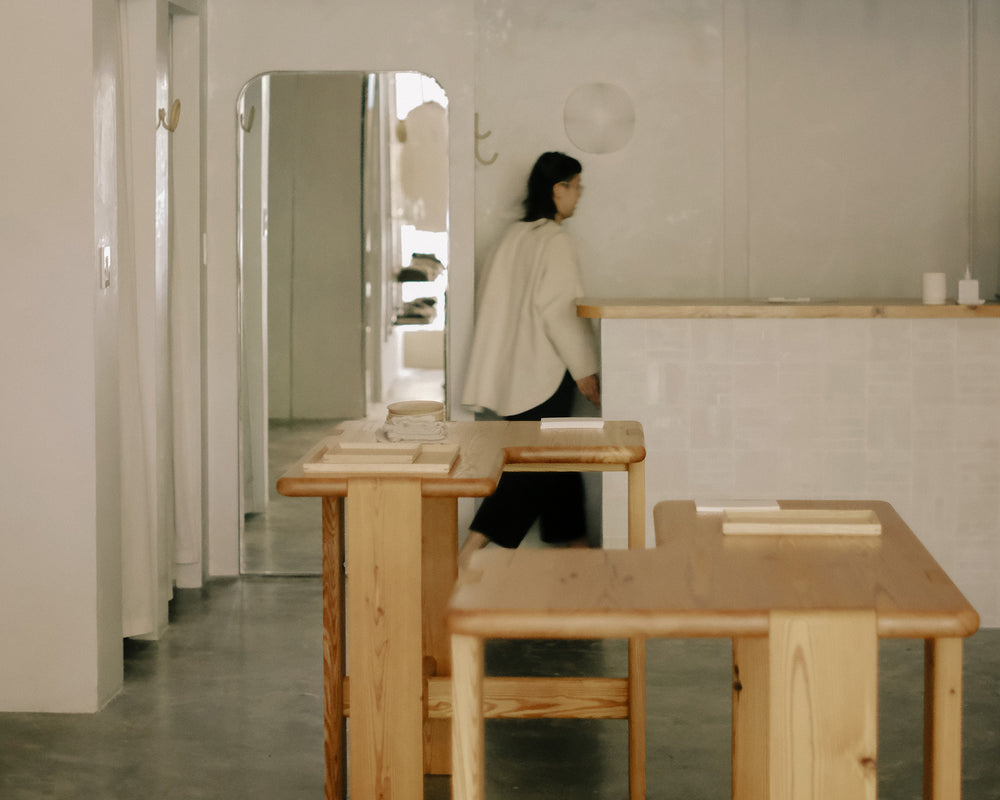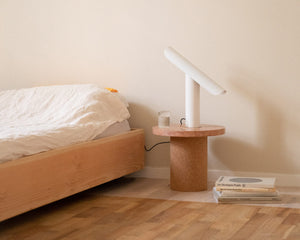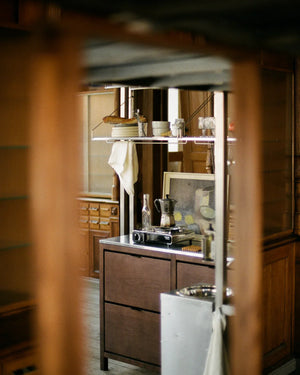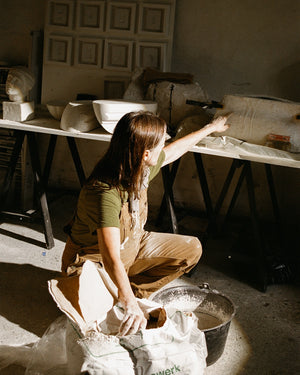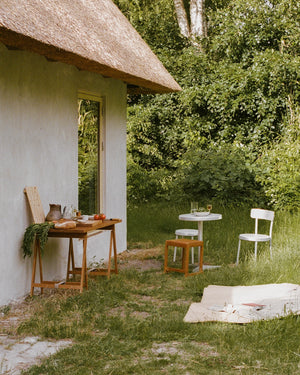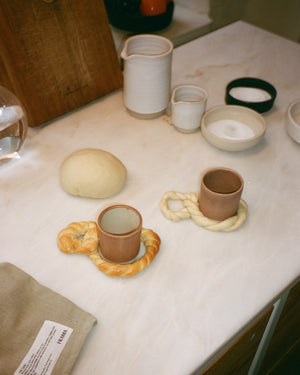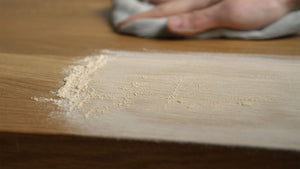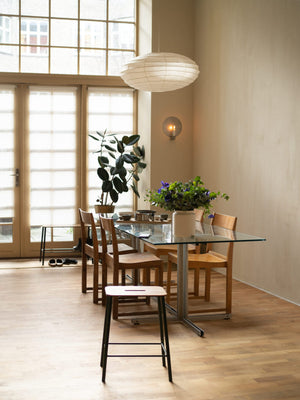
At Home With Cassandra Bradfield
American-born designer Cassandra Bradfield opens the doors of her former factory house in Copenhagen, where high ceilings and unique architecture make her space airy, mediative, and curious. Discover a home that embraces natural materials and thoughtful finishes, with a balance of lightness and privacy.
"I think the dialogue around creating and questioning what should be created is always inspiring."


Tell us about your apartment.
I live in Østerbro, in a former factory house located in a lovely yard made up of a few apartments, amongst a calm neighborhood just a stone's throw from everywhere I want to go. There was a stroke of luck in finding it, but not without a lot of searching. I dreamt of high ceilings and special architecture and was able to get this before it went on the market.

Describe your apartment with three words.
Airy, mediative, curious. There is a lightness about the space being in such open volumes, but many small nooks to retreat to. Openness with varying levels of comfort and privacy.
Which qualities do you appreciate most about the apartment?
One of my favorite places to be is sitting at the dining table, a centerpiece making the most out of the apartment’s full height. It is a place I gather alone and together with friends, and it is closest to a large gate window that filters sunlight into a soft, warm glow. I like all parts though, and I tend to move to every nook of my apartment throughout the day as my mood changes.
Which changes did you make to the apartment?
There was impressive and exciting architecture within the 4-meter-high ceilings and large gate windows, however when developers had converted this into a livable space, they took some very basic finishing routes. The big architectural journey I dove into was analyzing how I could bring the character and history back to this place. It’s all painted with a custom paint produced by Linoilie in a color that changes throughout the day. I resurfaced the whole apartment pretty much, including a kitchen renovation where I painted new cabinets with the same finish in a high gloss brushed effect, and added Douglas fir shelves with industrial pipe ventilation. There is not much in this apartment I have not touched! Everything from curtains, to floors to a custom built-in reading nook.

How do your cats enjoy this spatial experience?
Haha. They love trotting around the different spaces, I think cats enjoybeing inhighplaces. They also like looking up through the glass dining table. We all alternate spots for hours on end.

"Context is always the most important. A space can be transformed in so many ways, but the spaces we tend to remember most catch a certain feeling."

Elaborate on your position at FRAMA.
I met and started working with FRAMA in 2014, so it has been a long and beautiful journey. This is a place to question and evolve on all aspects and scales of design. We transform architecture, but the involvement stretches to ceramics and home objects as well. The sense that FRAMA is mindful of the holistic experience of design has never changed, but our capacity to execute these different objects and projects has throughout the years.
What gives rise to the idea of the projects you are working on?
Context is always the most important. A space can be transformed in so many ways, but the spaces we tend to remember most catch a certain feeling. Some of this sensibility can be transmitted through the photography of our projects. For instance, conveying a strong sense of tactility is a strong thread of our work. Overall, the concentration on materials and finish details coming together, along with scale and proportion always leads that journey.
How do you stay inspired and motivated?
I really like what I do, first off. I think the dialogue around creating and questioning what should be created is always inspiring. Getting to work at all different scales really suits my wandering mind. Getting a new material sample in often does the trick.











